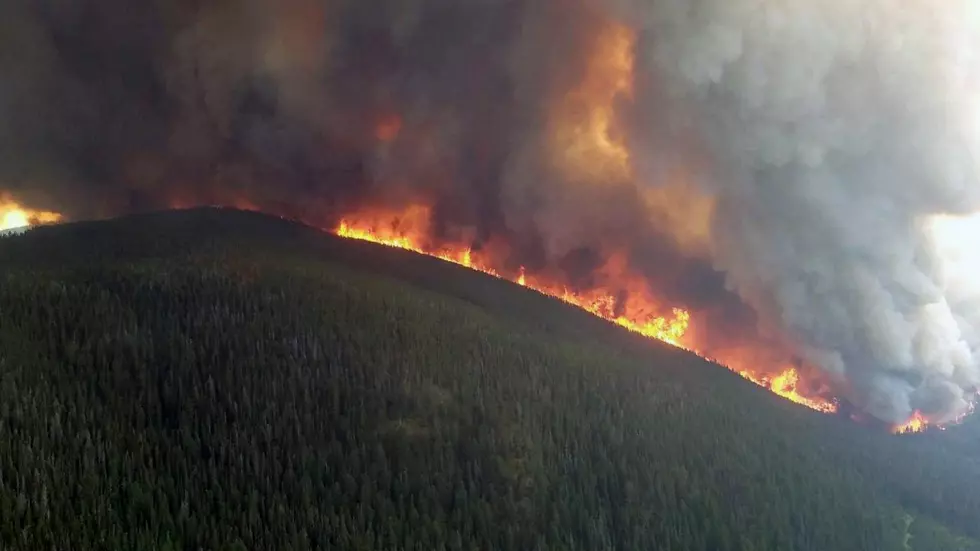
Sheep Creek rancher to revive devastated ranch after Cascade wildfire
Najifa Farhat
(Missoula Current) Don Hardland, the owner of Sheep Creek Ranch, still vividly remembers the last time Harris Mountain in Cascade County was engulfed in flames—a devastating fire that occurred four decades ago in the '80s.
However, when a recent wildfire razed a significant portion of his ranch in 2021, the loss was incomprehensible.
Situated in a remote, high country region, the ranch presented a formidable challenge for firefighters due to its inaccessibility and lack of escape routes. Consequently, the fire raged uncontrollably, leaving behind scorched earth and complete devastation, as Hardland painfully recalls, "a level that—basically sanitized the ground and just burned everything."
The fire's destructive path ravaged around 3,000 acres of the ranch, which spans between 8,000 and 10,000 acres in total. The ranch was home to a diverse range of wildlife, including bears, lions, elk, deer, turkeys, wolverines, grizzly bears and big horn sheep, capturing the essence of the Rockies. Despite managing to evacuate most of the animals to safety, some tragically lost their lives. The fire also consumed critical infrastructure, reducing cabins and bridges to ashes.
While natural forest regeneration can take several decades, the Sheep Creek Ranch serves as a vital wildlife migration corridor for Yellowstone and Glacier National Park through the Beartooth Pass. Aware that the forest is still in the process of recovering from the '80s fire, Hardland is determined not to rely solely on nature this time.
His deep connection to the ranch is palpable, and as he reflects on the devastating fire, emotions overcome him, "I think the biggest loss is here" (placing his hand on his heart), "The land is our life, and we take care of the land. It's our responsibility to bring it back to its glory the best way we can."
The regeneration project adopts a collaborative approach, combining public and private partnerships. Following the fire, the USDA announced an emergency grant from the Montana Natural Resources Conservation Service's Environmental Quality Incentives program, providing relief for the victims. Hardland secured funds from this grant, while additional financial support comes from private financing facilitated by Mast Reforestation, a startup based in Seattle.
Mast Reforestation aims to implement the reforestation project, which they consider a groundbreaking pilot initiative for Montana. Arnoud de Villegas, the Vice President of Business Development for Mast Reforestation, emphasized the project's objective to optimize long-term forest management and climate resilience.
“After assessing the damage of the fire, we provided a 'reforestation prescription' to optimize for long-term forest management, and resilience aligning with climate-adapting resilience. Rural communities that have already been struggling are in real need of help. We're humbled by the size of the task before us but confident in our ability to make real impact," he said.
Funding for the project comes from Mast Reforestation's recent $15 million project financing, raised through carbon credits supplier Carbon Streaming, specifically for restoring forests devastated by wildfires in the American West.
Villegas highlights the company's integration of technology into its reforestation services, utilizing drones to aerially distribute seedlings over charred land, fostering tree growth.
Zach Bashoor, the local forester and Forestry Lead for the project, exudes optimism regarding its eventual success. After conducting a preliminary assessment, his immediate focus was to reintroduce trees to the scorched land.
Reflecting on the devastating transformation of a once-green landscape into a desolate expanse, he expresses the profound impact, stating, "Watching a landscape go from green to black is devastating. And for a very, very long period of time, you might not see green again."
Before the fire, the ranch boasted diverse and thriving vegetation, including three main tree species: pine, Douglas fir, lodgepole pine, and the endangered whitebark pine, recognized by the Endangered Species Act in 2022.
This week, Bashoor and his team planted 60,000 seedlings, with plans to plant an additional 190,000 seedlings by the following week.
Taking into account anticipated mortality rates, he estimates that the regeneration process will yield approximately one and a quarter million trees over a span of three years.
“And that's only a fraction of the project,” he added.
Due to Montana's elevated terrain and arid climate, the germination and growth timeline will exceed the usual six-month period. Special care must be taken to nurture the seeds in greenhouses before they can be replanted in the charred soil. The first phase of the project is expected to reach completion this spring.
“It is kind of scary for us because we're in uncharted ground, but the end result, I think, will be pretty powerful and benefit a lot of others,” Hardland said.
